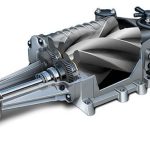AC hoses are critical components that transport refrigerant between the compressor, condenser, evaporator, and expansion valve. They allow the refrigerant to circulate through the system, absorbing and releasing heat to maintain a cool cabin temperature. Because these hoses handle high pressure and extreme temperature changes, they are built with durable rubber and metal fittings. However, over time, exposure to heat, vibration, and contaminants can cause wear, cracks, or leaks. Even a small leak can disrupt the refrigerant cycle, leading to noticeable cooling problems.
How a Leaking AC Hose Impacts Cooling Efficiency
When an AC hose develops a leak, refrigerant escapes from the system, reducing its ability to absorb heat from the cabin air. As refrigerant levels drop, the evaporator coil cannot cool effectively, resulting in weak or warm airflow from the vents. The AC compressor may also overwork to compensate for the loss, leading to increased strain and potential failure. In addition to refrigerant loss, leaks can allow air and moisture to enter the system, causing corrosion, clogs, and damage to other sensitive AC components. Ignoring a leaking hose can quickly turn a minor issue into a costly repair by the European Auto AC Repair in Overland Park, KS.
Common Signs of a Leaking AC Hose
Several symptoms can indicate a leaking AC hose. One of the most obvious signs is a noticeable decline in cooling performance, where the AC struggles to maintain cold airflow. You may also hear a faint hissing sound under the hood, especially after shutting off the engine, which suggests refrigerant is escaping. Visible oily residue around hose connections or fittings is another telltale sign since refrigerant often carries a small amount of lubricating oil. In some cases, you might even detect a chemical-like smell when the AC is running.
How Technicians Inspect and Diagnose Hose Leaks
During a professional AC service appointment, technicians use a variety of methods to inspect hoses for leaks. They visually check for cracks, wear, and loose connections. To detect hidden leaks, they may use electronic leak detectors or introduce UV dye into the refrigerant, making leaks visible under ultraviolet light. Pressure testing is another common technique to ensure the system maintains proper pressure levels without any drop. Once the source of the leak is confirmed, the technician determines whether the hose can be repaired or needs to be replaced entirely.
Repairing and Preventing Future Hose Leaks
If the damage is limited to a fitting or connection, it can often be resealed or repaired. However, if the hose itself is cracked, brittle, or heavily worn, replacement is the best solution. After repairs, the system is evacuated, recharged with the correct amount of refrigerant, and tested for proper cooling performance. To prevent future leaks, it’s important to schedule regular AC inspections, especially before peak summer months. Routine maintenance helps identify early signs of wear, ensuring your AC hoses and other components remain in top condition for reliable cooling.











